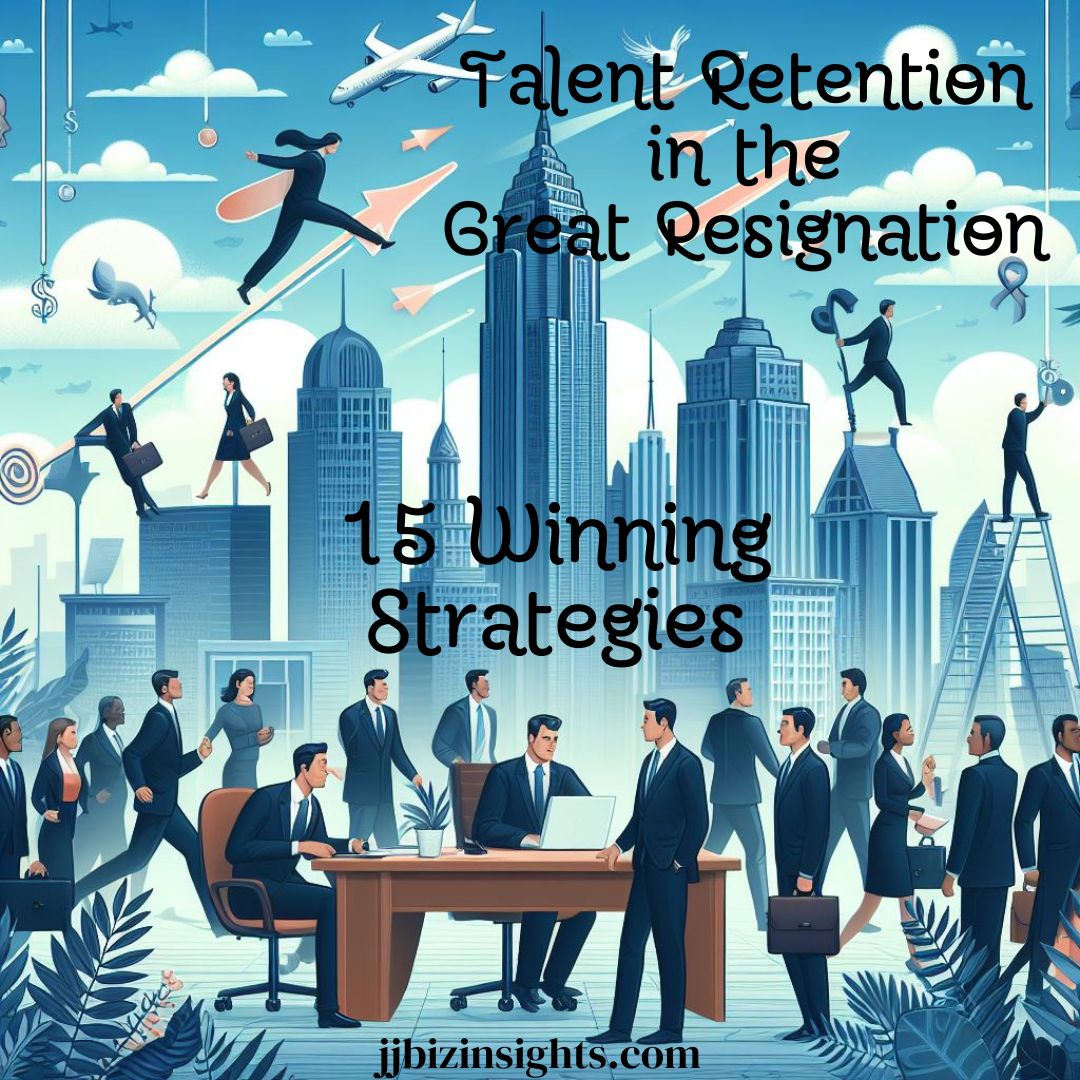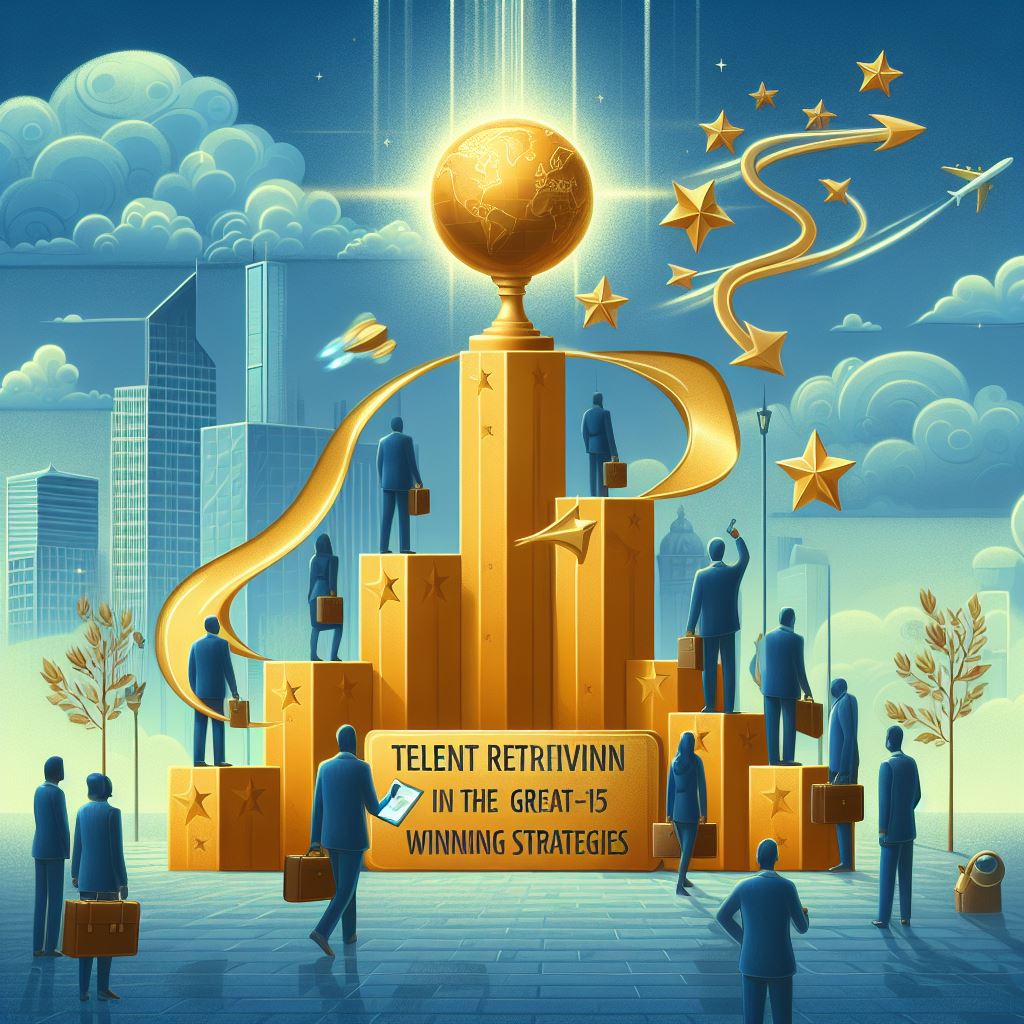
Talent Retention in the Great Resignation: 15 Winning Strategies
The Great Resignation has transformed the employment landscape, making talent retention a top priority for businesses across industries. Employees are re-evaluating their priorities, seeking better compensation, and demanding work-life balance. This shift in power necessitates a proactive approach from employers to attract and retain their most valuable assets – their talent.
Understanding the Drivers of the Great Resignation
Before diving into retention strategies, let’s explore the key factors fueling the Great Resignation:
- Burnout and Work-Life Balance: The pandemic blurred the lines between work and personal life for many, leading to burnout and a re-evaluation of priorities.
- Wage Stagnation and Rising Costs of Living: Many workers feel their pay isn’t keeping up with expenses, prompting them to seek better compensation elsewhere.
- Desire for Career Growth and Meaningful Work: Employees are increasingly seeking jobs that offer opportunities for advancement and a sense of purpose.
- Shift in Work Preferences: The rise of remote work has opened up new possibilities, and many workers are seeking flexible arrangements.
The Impact of the Great Resignation on Businesses
The Great Resignation poses significant challenges for businesses, including:
- Talent Shortages: Businesses across sectors are struggling to fill open positions due to a lack of qualified candidates.
- Increased Hiring and Training Costs: The competitive job market necessitates higher salaries and signing bonuses, and the time and resources needed to recruit and train new employees also increase.
- Decreased Productivity: High turnover can disrupt workflows and team dynamics, leading to decreased productivity.
15 Winning Strategies for Talent Retention in the Great Resignation

By implementing these proven strategies, businesses can build a resilient workforce and weather the storm of the Great Resignation:
- Competitive Compensation and Benefits: Offer salaries and benefits packages that are attractive in today’s job market to retain top talent.
- Work-Life Balance Initiatives: Promote flexible work arrangements, generous vacation policies, and programs that support employee well-being. This demonstrates your commitment to talent retention through a healthy work-life balance.
- Career Development Opportunities: Invest in your employees’ professional growth by offering training programs, mentorship opportunities, and clear career paths. This fosters a sense of talent retention by showing employees they can grow within the company.
- Positive Work Culture: Foster a positive work environment built on trust, respect, and open communication. This positive culture is a key factor in talent retention.
- Employee Recognition and Appreciation: Recognize and reward employees for their contributions to make them feel valued. Appreciation is a powerful tool for talent retention.
- Empowerment and Autonomy: Give your employees ownership of their work and empower them to make decisions. This fosters a sense of trust and talent retention.
- Strong Employer Branding: Develop an attractive employer brand that showcases your company values, culture, and commitment to employee well-being. A strong employer brand attracts and retains top talent.
- Focus on Diversity, Equity, and Inclusion (DE&I): Create a diverse and inclusive workplace where everyone feels valued and respected. A diverse and inclusive workplace fosters talent retention by creating a welcoming environment.
- Employee Feedback and Engagement: Actively seek employee feedback and implement strategies to address their concerns. This demonstrates your commitment to talent retention by listening to your employees.
- Remote Work Flexibility: Offer flexible work arrangements that cater to different needs and preferences. Flexibility is a key factor in talent retention in today’s job market.
- Invest in Technology and Tools: Provide employees with the tools and technology they need to be productive and efficient. Talent retention is enhanced when employees have the resources they need to succeed.
- Invest in Employee Wellness: Offer health and wellness programs to support employee physical and mental well-being. Investing in employee wellness demonstrates a commitment to talent retention and employee well-being.
- Focus on Learning and Development: Provide ongoing learning and development opportunities to help your employees stay up-to-date in their field. Talent retention is strengthened by investing in your employees’ skillset.
- Open Communication and Transparency: Maintain open and transparent communication with employees about company goals, changes, and challenges. Open communication builds trust and fosters talent retention.
- Internal Mobility Opportunities: Offer opportunities for employees to grow within the company by promoting from within and creating career development paths. Providing internal mobility options is a strong talent retention strategy.
By implementing these strategies, businesses can navigate the changing employment landscape and build a strong company culture that attracts, engages, and retains top talent in the era of the Great Resignation.
Real-World Examples of Successful Talent Retention
Here are some real-world examples of successful talent retention strategies:
- Offer Competitive Base Salaries or Hourly Wages:
- Providing a wage that reflects the value of employees’ hard work is crucial. Proper compensation is more important than any other factor in retaining employees. Regularly adjust wages for inflation and reward experience growth.
- For instance, companies like Google and Microsoft are known for offering competitive salaries to attract and retain top talent.
- Let Your Employees Work From Home:
- Flexible work arrangements have become essential. Allowing remote work provides employees with a better work-life balance and can significantly impact retention.
- Automattic, the company behind WordPress, is a prime example. They have a fully distributed workforce, allowing employees to work from anywhere in the world.
- Provide Flexible Scheduling and Reduced Workdays:
- Offering flexible schedules or shorter workweeks can enhance job satisfaction and loyalty. Employees appreciate the ability to manage their time effectively.
- Deloitte has implemented flexible work arrangements, allowing employees to adjust their schedules based on personal needs.
- Encourage and Promote a Work-Life Balance:
- Prioritizing employee well-being is essential. Encourage breaks, vacations, and mental health support. A healthy work-life balance contributes to long-term retention.
- Salesforce is known for its focus on employee well-being, offering wellness programs and promoting work-life balance.
Remember, successful talent retention involves a combination of these strategies tailored to your organization’s unique needs. Each company should adapt and customize these approaches to create an environment where employees feel valued and motivated to stay. 🌟
How can companies measure employee satisfaction?

Employee satisfaction is a critical aspect of maintaining a healthy and productive workforce. It directly impacts employee retention, productivity, and overall organizational success. To effectively measure employee satisfaction, companies can utilize various employee satisfaction metrics. Let’s explore some of these methods:
- Employee Satisfaction Surveys:
- Conducting regular employee satisfaction surveys is one of the most common and effective ways to gauge how satisfied employees are with their jobs and work environment.
- These surveys typically include questions related to various aspects of work, such as compensation, stress levels, leadership, teamwork, company culture, and work-life balance.
- By gathering feedback directly from employees, organizations can identify areas for improvement and tailor their strategies accordingly.
- Employee Net Promoter Score (eNPS):
- The eNPS measures employee loyalty and satisfaction by asking a single question: “On a scale of 0 to 10, how likely are you to recommend our company as a great place to work?”
- Employees who give high scores (9 or 10) are considered promoters, while those with lower scores (6 or below) are detractors. The eNPS is calculated by subtracting the percentage of detractors from the percentage of promoters.
- Absenteeism Rate:
- High absenteeism rates can indicate dissatisfaction among employees. Tracking the frequency of unplanned absences provides insights into their overall job satisfaction.
- Employee Satisfaction Index (ESI):
- The ESI uses three specific questions to measure overall employee satisfaction:
- How satisfied are you with your workplace?
- How satisfied are you with your job?
- How satisfied are you with your supervisor?
- The ESI provides a numerical score that reflects employees’ contentment with these key aspects.
- The ESI uses three specific questions to measure overall employee satisfaction:
- Employee Turnover Rate:
- High turnover rates suggest that employees are leaving the organization due to dissatisfaction. Calculating turnover rates helps identify potential issues and areas for improvement.
- Glassdoor Rating:
- Monitoring the company’s Glassdoor rating provides insights into how employees perceive the organization. A low rating may indicate dissatisfaction or negative experiences.
Remember that employee satisfaction and employee engagement are related but distinct concepts. While satisfied employees may not necessarily be highly engaged, engagement often builds upon satisfaction. Organizations should use a combination of quantitative and qualitative metrics to gain a comprehensive understanding of employee satisfaction and take proactive steps to improve it. 🌟
Design Thinking in Business Strategy: A Comprehensive Guide
Building a Strong Professional Network: Tips and Strategies
References:
- 15 Effective Employee Retention Strategies In 2024 – Forbes Advisor
- 6 Methods for Measuring Employee Satisfaction | Hubstaff Blog
- 5 Useful Employee Satisfaction Metrics to Track – AIHR
- Measuring happiness: 4 employee satisfaction metrics you need
- Top Employee Satisfaction Metrics To Measure Engagement – datapine
- What are employee satisfaction metrics: Best practices to measure them …




